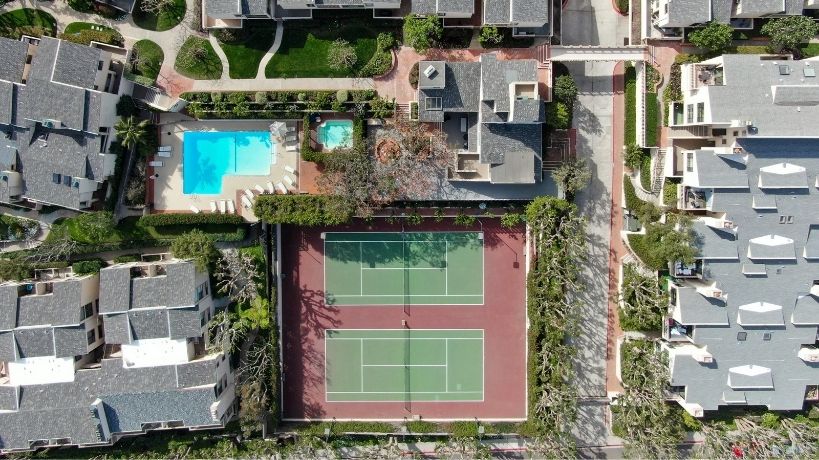
Although installing a residential tennis court is fulfilling, you have to consider the right factors during the planning stages. Those who do will benefit from a great source of fun and exercise. This quick guide will help homeowners understand what to know before building residential tennis courts.
Research Local Zoning Laws
The first step homeowners must take before installing a tennis court is researching whether you even can have permission to do it. Two key factors determine whether you can have a residential tennis court: your local zoning laws and HOA guidelines.
If you’re unfamiliar with the acronym HOA, it stands for Homeowners Association. Take the time to learn your local regulations to ensure you can move forward with the project. If you have the go-ahead, you can begin getting into details like court surface materials.
Choose the Right Surface Material
A tennis court’s surface material affects more than the visual appeal of the area. Your court’s surface material directly relates to the type of playstyle you can adequately enjoy on it. The available surface options include clay, grass, and “hard.” Hard courts typically contain asphalt or concrete.
Clay courts are best for players looking for games with a slower pace due to how high it allows the ball to bounce. On the other hand, grass courts promote a much quicker playstyle where the balls bounce fast and low. Hard courts fall in between the two extremes, allowing the ball to travel at moderate speeds and heights. Take the time to learn what material is best for your playstyle before the installation.
Find a Suitable Contractor
A project as sizeable as building a tennis court requires the help of a reliable professional. If a low-quality contractor constructs your tennis court, you can expect low-quality results. Just as roofing requires knowledge and experience, so does installing tennis courts.
Before partnering with a contractor, conduct a thorough background search. Ask about referrals from previous clients and seek out any online reviews they might have. As you should with any contractor, be sure to establish they have the right experience, certification, and insurance policies for responsibly carrying out this project.
With a better understanding of what to know before building residential tennis courts, you can make the most out of this project. Furthermore, be sure you have the right accessories on the court, such as a suitable seating area for breaks between matches. As you can see from our selection of tennis court benches, finding high-quality seating isn’t as hard as it sounds.

